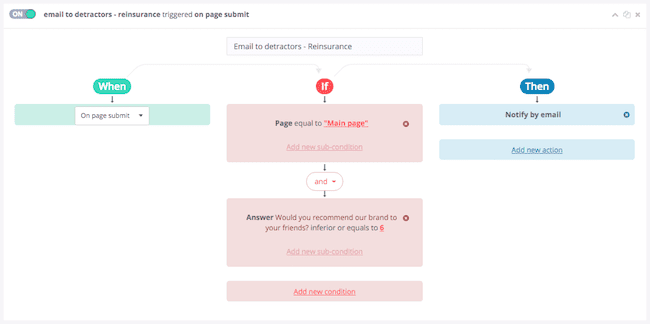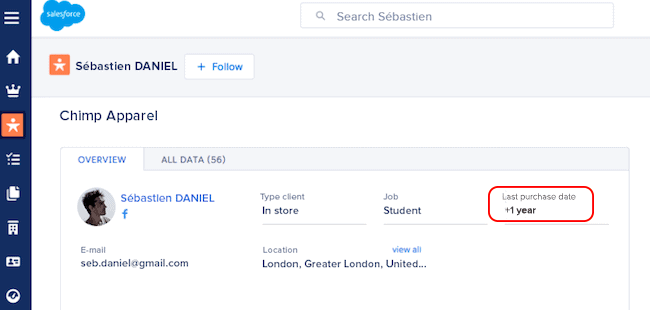Dissatisfied customers are an important segment to focus on. While a satisfied customer might talk about your product with 3 people, a dissatisfied customer will talk about it with 10. Effectively managing customer dissatisfaction is becoming more and more important, as it also offers a significant opportunity to create value. Managing customer dissatisfaction effectively also...
Dissatisfied customers are an important segment to focus on. While a satisfied customer might talk about your product with 3 people, a dissatisfied customer will talk about it with 10. Effectively managing customer dissatisfaction is becoming more and more important, as it also offers a significant opportunity to create value.
Managing customer dissatisfaction effectively also means constantly reflecting on how to improve the customer experience. Here’s why.
Different types of dissatisfied customers
There are two general areas that a customer might be dissatisfied with:
– A company’s products or services themselves (such as quality, price, or value)
– The customer journey (purchasing process, order tracking, delivery, customer service, etc.)
Customers react differently to negative experiences. Not all customers express their dissatisfaction in the same way, so understanding the different categories of dissatisfied customers is key.
All studies and surveys that have been done on the subject clearly show that out of 100 dissatisfied customers, only 4 or 5 will take the first steps to voice their dissatisfaction directly. Most of the time, the dissatisfied customer will just take their business elsewhere without letting you know why. However, they won’t hesitate to tell their friends and family about their negative experience.
First and foremost, you’ll need to distinguish between dissatisfied customers who take the initiative to express their thoughts, and those who don’t. Among the customers who let you know about their negative experience, there are several different categories:
Dissatisfied customers expressing frustration or anger
These are the customers who express strong feelings of unhappiness, sometimes for a minor incident. These are the most challenging customers to manage, as the customer’s feelings of frustration will usually overtake rational discussions about the reasons behind this dissatisfaction.
They are looking for compensation, and as they are regular customers, it’s important to let them know that you understand them and care about their concerns.
The opportunistic dissatisfied customer
This customer is not truly dissatisfied, but may make complaints nonetheless, for minor reasons. They are generally looking for financial compensation, and their reason for dissatisfaction could therefore simply be a pretext for this. It is best not to give in to their requests every time.

The opportunistic dissatisfied customer does not hesitate to use threats that he rarely carries out
The agressive dissatisfied customer
This customer takes every possible opportunity to express their dissatisfaction, may speak impulsively, and is not simply looking for an apology. In these cases, to prevent the conversation from moving to social media or the comments section and taking a turn for the worse, it’s important to listen attentively to the customer.

Don’t fall into the clutches of the aggressive dissatisfied customer
Above all, don’t fall into the trap: always be courteous.
The sincerely dissatisfied customer
Of course, some customers who voice complaints were truly unhappy with their experience and are expressing their thoughts sincerely. These customers will clearly explain why they were dissatisfied, without exaggerating.
In the face of this unsatisfied customer profile, we recommend that you adopt a comprehensive approach and acknowledge any mistakes you may have made. You can possibly thank him for making you aware of the problem.
He will appreciate your mea culpa and your sincere willingness to respond to his disappointment. He may even become an ambassador for your brand.

Once an ambassador, the former dissatisfied customer will promote the value of your company
With this type of dissatisfied customer, there is a real opportunity to take a constructive approach and significantly improve the quality of your products or your customer journey.
It is important to clearly understand these different categories of dissatisfied customers, as your approach to managing their dissatisfaction will be different – avoiding bad buzz or contributing to your company’s continuous improvement. Any damage to your company’s reputation, sometimes unjustified, can, of course, have dramatic consequences for your business, as well as carrying significant costs.
What should you do about “silent” dissatisfied customers?
It’s important to be proactive when it comes to addressing customer dissatisfaction. The vast majority of customers won’t take the initiative to voice their dissatisfaction, but this “silent” dissatisfaction can nonetheless have a negative effect on your company’s reputation and development.
Here are two complementary approaches to addressing silent customer dissatisfaction.
A preventative approach to reducing customer dissatisfaction
How can you tell if a customer is satisfied or not? The best solution is to use customer satisfaction surveys.
These allow you to obtain feedback from customers who would have not shared it otherwise, but are still happy to express their thoughts via a survey, especially if it is targeted.
In your survey, it’s important to determine the reasons for any dissatisfaction. Begin with a Net Promoter Score-type question that will allow you to distinguish detractors (who gave a score between 0 and 6) from promoters. Then use an open question to give the participant the opportunity to explain the reason for their dissatisfaction in detail.
Offer to have the customer service call the customer back, or set up an alert for your team, so they can get in touch with the customer quickly.

Here’s an example of a scenario created using Skeepers that notifies you by email if a customer has expressed dissatisfaction.
You can also use the Customer Satisfaction Score (CSAT), which lets you measure customer satisfaction following a specific interaction, such as a purchase. For example: (“Are you satisfied with X?” : Very satisfied / somewhat satisfied/not very satisfied / not at all satisfied).
With these surveys, you can de-escalate, as much as possible, any situations where a customer is dissatisfied, by taking preventative and proactive action on possible causes of dissatisfaction.
You will also be able to detect friction points in your customer journey, and thus improve the customer experience.
A curative approach to customer dissatisfaction
The second method, which complements the first, consists of determining which customers in your CRM no longer make purchases from your company.
There is a strong chance that a number of these customers were dissatisfied at some point, and have gone to your competitors.
Once you have identified these potentially dissatisfied customers in your database, you can reach out to them, with initiatives such as sending a carefully-written email asking why they no longer make purchases with your company.

The feedback you receive will help you better understand the situation, as well as reflect on possible strategies to win back these customers.
With your CRM tool, you can also identify which of your company’s products are not being purchased (or re-purchased) by your customers. The information in your CRM is extremely valuable in helping you detect any problems in your offering.
It is also important to remember that addressing customer dissatisfaction (whether silent or not) is a key part of your customer retention strategy. Dissatisfied customers can end up becoming the most enthusiastic ambassadors of your brand and your company, once their request or complaint has been addressed.
Some studies even show that the most loyal customers are those who have had a negative experience at some point or another. With this in mind, we strongly recommend taking advantage of the opportunities that customer dissatisfaction provides, especially because keeping your current customers is also less expensive than finding new ones!
In applying these two methods, remember that focusing your efforts on the customer experience, right from the beginning, is key. In other words, you need to take a customer-centric approach. This is the most effective way to understand changes in your customers’ wants and needs, their opinions on your services and/or products, as well as a great deal of other information, in real-time. It’s also the best way to anticipate possible factors that may lead to dissatisfaction, and therefore reduce them as much as possible.








